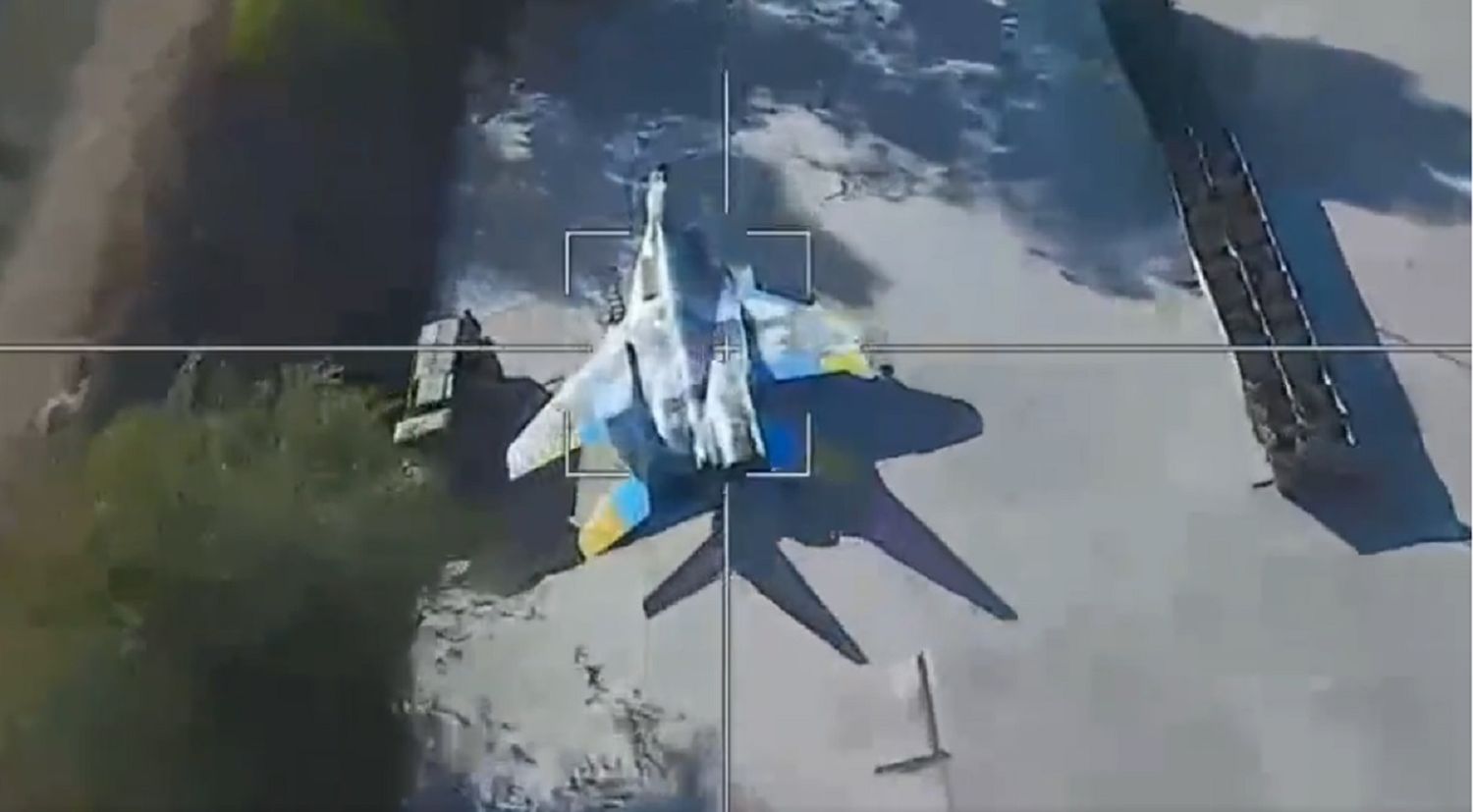A Ukrainian MiG-29 is hit by a Russian Lancet kamikaze drone at Dolgintsevo airfield.
For the first time, a Russian Lancet kamikaze drone was used to attack an Ukrainian airbase, damaging a MiG-29. The event occurred 70 km from the front line.
Once again the Lancet loitering munitions, produced by ZALA Aero Group (part of the Kalashnikov conglomerate), proved to be one of the most efficient precision strike weapons available to the Russian Armed Forces, hitting a fighter aircraft stationed at the Dolgintsevo airfield.
In the video uploaded to social networks, it can be seen that at least two unmanned aerial systems were used in the attack on the Ukrainian base. One, flying at medium altitude, to locate targets and assess damage and the Lancet, which hit the side of the MiG-29’s cockpit. While the damage to the aircraft does not appear to have been catastrophic, it was more than likely enough to put it out of action.
The remarkable thing about this war action is that this air base is located in the Krivoy Rog region, 70kms away from the front line, far beyond the 40kms maximum range declared for the Lancet-3 drones (the most used lately).
See also: Russia readies next-generation Lancet suicide drones for use in Ukraine
It seems unlikely that a Russian Special Forces team would manage to sneak into territory controlled by Ukrainian troops, carrying the necessary equipment to deploy the Lancet, since a pneumatic system integrated into a small ramp is used for its launch. Although this method of launching was selected because it is relatively light and easy to move, it is still has an undesirable volume to transport in an infiltration mission 30 km behind enemy lines. Although this option cannot be dismissed altogether.
On the other hand, it seems more feasible that ZALA managed to modify some aspect of the kamikaze drone Lancet to achieve this significant increase in range. If this were the case, Russia would have a precision strike capability with sufficient range and massive enough to pose a real threat to Ukrainian weapon systems that have so far remained relatively out of reach, such as the famed HIMARS multiple rocket launchers.


Comentarios
Para comentar, debés estar registrado
Por favor, iniciá sesión